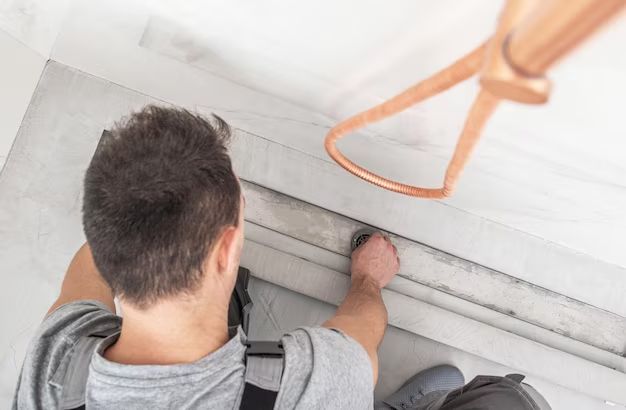Replacing a shower drain assembly is a straightforward DIY project that can refresh the look of your shower and fix any leaks or clogs in the old drain. With some basic tools and plumbing supplies, you can swap out an old drain assembly for a new one in just a few hours. In this step-by-step guide, we’ll walk you through the entire process of replacing a shower drain assembly, from start to finish.
Page Contents
What You’ll Need
Before starting this project, make sure you have the following materials and tools on hand:
| New shower drain assembly kit | Adjustable wrench |
| Channel lock pliers | Hacksaw |
| Screwdriver | Plumber’s putty or silicone |
| Teflon tape | Rag |
| Bucket | Safety glasses |
The drain kit will include the strainer, drain pipe, and gasket. Make sure you purchase one that fits your current shower drain size. Most kits are universal, but always check.
You’ll also need some basic safety gear like glasses and gloves to protect yourself while working. Make sure to turn off the water supply to the shower before getting started.
Preparing the Work Area
Start by clearing out the area around the shower drain so you have room to work. Remove any bath mats or other items covering the drain. It’s also a good idea to place a towel in the bottom of the tub to prevent dropped parts and tools from scratching the surface.
Use the rag to give the drain area a thorough cleaning. This will help the new plumber’s putty and gasket adhere properly when installing the new drain. Remove as much hair, soap scum, and other grime as possible from the drain surround and pipe threads.
Now is also a good time to clean out the existing drain itself. Bend the tabs up on the strainer plate and remove it from the drain pipe. Reach down into the drain with needle nose pliers to pull out hair, soap scum, or other debris clogging the pipe.
Removing the Old Drain Assembly
With the work area prepped, you can start removing the old shower drain assembly:
1. Use an adjustable wrench to loosen and unscrew the drain collar nut that connects the drain pipe to the bottom of the drain body. Set the nut aside somewhere safe.
2. Give the drain pipe a few twists with the pliers to break the seal of any remaining plumber’s putty or caulk. Pull the pipe down and out of the drain opening.
3. From below, push the strainer plate and old drain body up through the drain hole until it pops out above. Remove any stubborn putty or caulk sealing it in place.
4. Use a hacksaw to cut the drain pipe to length if needed so it will fit with the new drain. Deburr the cut end with sandpaper so it fits cleanly into the new drain.
5. Clean the threads on the drain collar nut so it is ready to be installed with the new drain.
Now the old drain assembly is fully removed and you have a clean opening ready for the new drain installation.
Installing the New Drain Assembly
With the old assembly taken apart, you can now install the new shower drain:
1. Apply plumber’s putty around the flange of the new drain body. Use enough to seal it to the shower floor.
2. From above, insert the new drain body up through the drain hole. Press it firmly in place so the putty seals the flange to the shower floor.
3. From below, slide the rubber gasket up over the drain body threads, followed by the drain collar nut.
4. Apply Teflon tape to the threads on the drain pipe. This will allow you to tighten the joint while preventing leaks.
5. Thread the drain pipe into the drain body and hand tighten. Then use the adjustable wrench to tighten 1/4 turn past hand tight.
6. Tighten the drain collar nut with the wrench to firmly secure the drain pipe.
7. Apply a small bead of silicone sealant around the edge of the drain flange for an extra water tight seal.
Installing the New Strainer
The drain assembly is now installed and sealed. All that’s left is to install the decorative strainer plate:
1. Lower the new strainer plate into the drain flange. It should fit cleanly inside the drain body.
2. Bend the tabs up to secure the strainer plate firmly against the shower floor.
3. Remove any excess plumber’s putty that has oozed out around the drain body. Wipe the area completely clean.
4. Run the shower and check for leaks around the new drain assembly. The putty may need 24 hours to fully cure and seal.
Conclusion
While it takes a bit of time and patience, installing a new shower drain assembly is a job any DIYer can tackle. The key steps are removing the old assembly, installing the new drain body and pipe, sealing with putty, and securing the strainer plate. Make sure to apply plumber’s putty generously, tighten all joints firmly, and seal with silicone to prevent leaks. Follow these steps correctly and your new shower drain should provide perfect performance for years to come. We hope this detailed guide gives you the confidence to upgrade your shower with a fresh new drain assembly.
